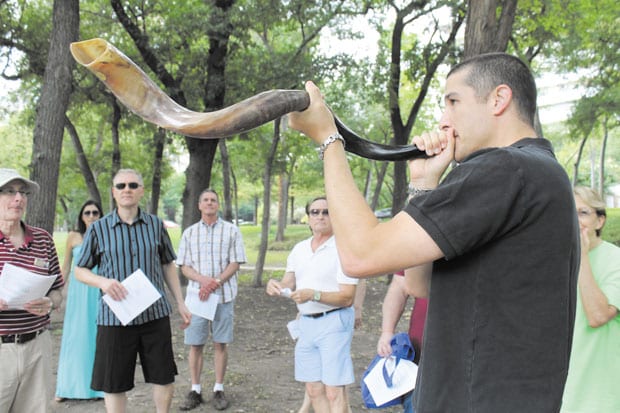On the second day of Rosh Hashanah, members of Congregation Beth El Binah gathered along Turtle Creek to perform a Tashlich service — the casting away of sins by symbolically tossing pieces of bread into a moving body of water. The service ended with Jeff Zigman blasting the shofar, a rams horn.
High holiday services conclude on Sept. 22 with Kol Nidre service at 7 p.m. and Yom Kippur services from 10 a.m.-6 p.m. on Sept. 23 at the congregation’s new home, Northaven United Methodist Church, 11211 Preston Road.
Yom Kippur, a day of fasting and meditation, is the holiest day of the year on the Jewish calendar, a day to atone for sins committed against God over the past year. Sins against another person must be reconciled with that person. The holiday ends asking God to inscribe their names in the book of life for the next year.
Several other holidays follow in quick succession. Sukkot, the festival of booths, is the harvest holiday and a week of thanksgiving.
It’s celebrated by eating meals outside in a temporary structure, called a sukkah, built just for the holiday. Sukkot begins five days after Yom Kippur and lasts eight days (seven in Israel and for Reform Jews).
Simchat Torah is a two-day holiday that coincides with the seventh and eighth days of Sukkot. On Simchat Torah, Jews read the last portion of the Torah, re-roll the scrolls and begin reading again with the first passages from Braishit (Genesis).
Shmini Atzeret is on the eighth day of Sukkot. It celebrates … well we have no idea what it celebrates. It’s commanded to be celebrated as a separate holiday in the Torah with no explanation and its meaning has been lost over the last couple of thousand years, so there’s no particular observance.
This article appeared in the Dallas Voice print edition September 18, 2015.


